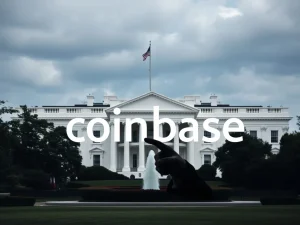Hopeful Repayments Begin: FTX Creditors Share Painful Lessons from Crypto Collapse

The tumultuous saga of FTX continues to impact the cryptocurrency landscape, and as repayments to creditors finally get underway, the voices of those affected are emerging, filled with stories of distress, resilience, and crucial lessons learned. The shocking collapse of FTX sent tremors throughout the crypto world, serving as a harsh reminder of the inherent risks associated with entrusting digital assets to centralized exchanges. What are FTX creditors saying as this new chapter begins, and what vital takeaways can the broader crypto community glean from their experiences?
The Painful Impact of Centralized Exchanges on FTX Creditors
For many, the FTX debacle was not just a financial setback; it was a deeply personal ordeal. The initial content rightly points to the ‘mental distress’ suffered by FTX creditors, and this emotional toll cannot be overstated. Imagine entrusting your hard-earned savings, or a significant portion of your investment portfolio, to what you believed was a reputable platform, only to have it vanish overnight. This is the reality faced by countless individuals caught in the FTX crossfire.
- Emotional Turmoil: Beyond the financial losses, FTX creditors have grappled with feelings of betrayal, anxiety, and uncertainty. The sudden freezing of funds and the subsequent bankruptcy proceedings plunged many into a state of emotional distress, impacting their personal lives and financial stability.
- Financial Hardship: The inability to access funds on FTX led to immediate financial constraints for many users. Individuals and businesses alike found themselves unable to meet obligations, impacting everything from daily expenses to long-term financial plans.
- Erosion of Trust: The FTX collapse significantly eroded trust in centralized exchanges and the broader crypto ecosystem. For newcomers, this event served as a stark warning, while seasoned crypto users were forced to re-evaluate their risk management strategies.
The image of a seemingly robust and innovative exchange crumbling under its own weight is a powerful cautionary tale. It underscores the fundamental principle of ‘not your keys, not your coins’ – a mantra that resonates deeply within the crypto community, especially in the wake of FTX.
Crypto Repayments: A Ray of Hope or a Partial Relief?
The commencement of crypto repayments to FTX creditors is undoubtedly a positive development, offering a glimmer of hope after a prolonged period of uncertainty. However, it’s crucial to understand the nuances of this process and manage expectations realistically. Are these repayments a full restoration of lost funds, or merely a fraction of what was lost? What does this process entail, and what challenges lie ahead?
While details are still unfolding, it’s important to consider several key aspects of these crypto repayments:
| Aspect | Details/Considerations |
|---|---|
| Percentage of Repayment | It is highly unlikely that creditors will receive 100% of their funds back. Bankruptcy proceedings typically involve asset recovery and distribution, often resulting in partial repayments. The exact percentage will depend on the recovered assets and the claims process. |
| Timeline for Repayments | Crypto repayments are not instantaneous. The process is expected to be lengthy and complex, potentially spanning months or even years. Creditors need to be prepared for a waiting period and ongoing updates. |
| Form of Repayment | The form in which repayments will be made (cash, crypto, or a combination) is a critical factor. The value of crypto assets has fluctuated significantly since the FTX collapse, which could impact the perceived value of repayments. |
| Claims Process | FTX creditors will need to navigate a claims process to formally request and receive their repayments. This process may involve documentation, verification, and adherence to specific deadlines. |
For FTX creditors, these crypto repayments represent a step towards recovery, but it is essential to approach this phase with informed awareness and realistic expectations. It’s a marathon, not a sprint, and patience will be paramount.
Lessons Learned: Moving Beyond the Crypto Collapse
The crypto collapse of FTX offers invaluable lessons for everyone involved in the cryptocurrency space – from individual users to exchanges and regulators. What are the key takeaways that can prevent similar disasters in the future, and how can we build a more resilient and trustworthy crypto ecosystem?
Here are some critical lessons highlighted by the FTX saga:
- Risk of Centralized Exchanges: The FTX event starkly underscores the inherent risks associated with centralized exchanges. While they offer convenience and a user-friendly interface, they also act as custodians of user funds, making them potential targets for mismanagement, fraud, or regulatory action.
- Importance of Due Diligence: Users must conduct thorough due diligence before entrusting their funds to any exchange. This includes researching the exchange’s leadership, security practices, regulatory compliance, and financial health. Relying solely on marketing hype or celebrity endorsements is a recipe for potential disaster.
- Self-Custody and Control: The principle of self-custody, where users control their private keys and therefore their funds, gains even greater significance after the FTX collapse. Hardware wallets and decentralized wallets empower users to take direct ownership of their crypto assets, mitigating the risks associated with centralized exchanges.
- Transparency and Regulation: Increased transparency and robust regulation are crucial for building trust and stability in the crypto market. Exchanges should be required to provide clear and auditable proof of reserves, and regulatory frameworks should be designed to protect user funds without stifling innovation.
- Diversification and Risk Management: Just as in traditional finance, diversification and sound risk management are essential in crypto. Putting all your eggs in one basket, especially on a centralized exchange, significantly amplifies risk. Spreading investments across different platforms and asset classes, and allocating a portion to self-custody solutions, is a prudent approach.
Navigating the Future of User Funds and Crypto Security
The path forward for user funds in the crypto space hinges on embracing the lessons of the FTX crypto collapse and proactively implementing measures to enhance security and transparency. What steps can individuals and the industry take to safeguard user funds and foster a more secure crypto future?
Actionable insights include:
- Educate Yourself: Continuous learning about crypto security, self-custody options, and risk management is paramount. Stay informed about best practices and emerging threats.
- Explore Decentralized Alternatives: Consider utilizing decentralized exchanges (DEXs) and decentralized finance (DeFi) platforms for trading and other crypto activities. While DeFi also carries risks, it offers greater transparency and user control compared to centralized exchanges.
- Demand Transparency from Exchanges: Support exchanges that prioritize transparency and security. Advocate for proof of reserves and regular audits to ensure accountability.
- Advocate for Responsible Regulation: Engage in constructive dialogue with regulators and policymakers to shape regulations that protect user funds and promote innovation in the crypto space.
In conclusion, the FTX crypto collapse was a painful but pivotal moment for the cryptocurrency industry. As crypto repayments begin to offer some relief to FTX creditors, the enduring legacy of this event will be the critical lessons learned about risk, responsibility, and the fundamental principles of decentralization and self-custody. By embracing these lessons and working collaboratively, the crypto community can strive to build a more resilient, secure, and trustworthy financial future.








